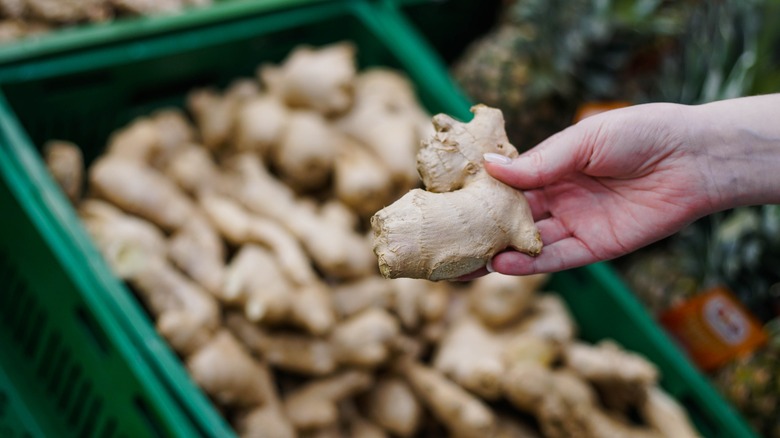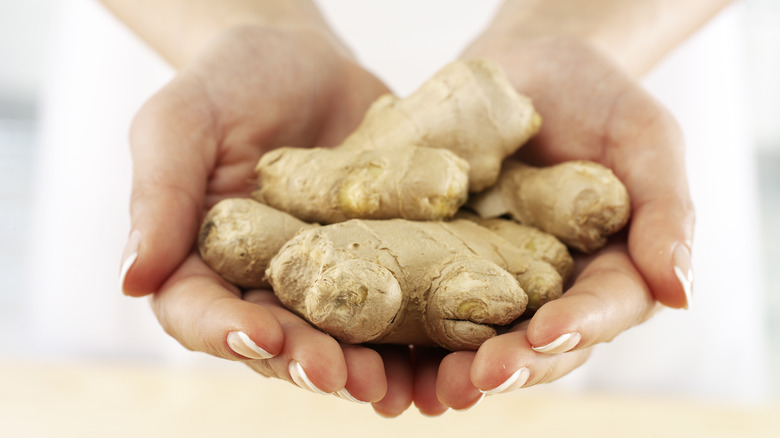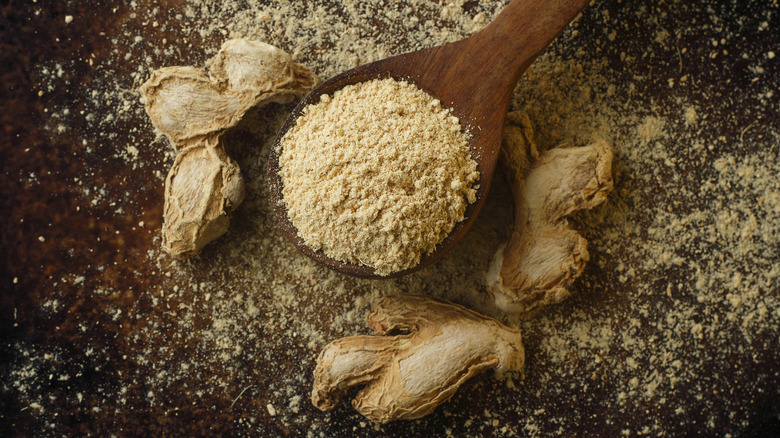The Big Red Flag To Look Out For Before Buying Ginger
Ginger is a delicious, multipurpose root that can transform from fresh ingredient to dried spice, and is used for both savory and sweet applications. But while it's fairly easy to grab a container of powdered ginger or a jar of minced ginger, there are times when shopping for hands of fresh ginger is necessary. Luckily, there are a few distinct qualities you can look out for when buying ginger to make sure you get a fresh, high-quality product, some similar to other varieties of fresh produce.
Fresh ginger with a soft or slightly bruised skin is the most glaring red flag. Give it a feel, and if it's soft, that's a fair sign that it's starting to go bad and isn't fresh enough to purchase. You also won't be able to easily break off a knob from a droopy, soft piece of ginger. Fresh, firm ginger can cleanly break apart with ease.
Other key elements to look for when buying ginger
Just as you can keep an eye out to find a piece of ginger that's gone bad, you can keep a nose out as well. Ginger's typical scent is powerful and a little bit spicy. If that scent is undetectable, or worse, has started to sour and smells off, it's a sure sign the ginger has gone bad. You want to make sure your ginger still contains its signature zing so it can elevate whatever dish you're making.
The color of the ginger skin is another key indicator of freshness. Ideally, ginger skin should be light brown. The ginger's interior flesh is a vibrant yellow, but if that yellow starts to seep through the skin and create yellowish or dark brown spots, it could indicate spoilage. Similarly, if you peel a piece of ginger you've had for a while (perhaps using the spoon trick to peel ginger) and the yellow color has lost its vibrancy and turned darker, it'd be best to toss that piece.
Cooking with your fresh ginger
Mince fresh ginger and combine it with garlic or other aromatics for a perfect start to any stir fry. When it comes to texture keep in mind that minced ginger will cook down, but not as much as grated ginger might. Grated ginger is fine enough that it'll create a bit of a paste, which works well for dishes like soups or sauces. Or, try adding grated ginger to white rice for an easy way to add some zing.
If you want a potent ginger flavor, powdered ginger can deliver. Powdered ginger is more often used in baking, like in homemade ginger molasses cookies. Powdered or ground ginger has a potency that's particularly useful in baking, but can be used in other recipes when you need to pack a punch of extra flavor. If you need to substitute fresh ginger for ground fresh ginger or vice versa when cooking, keep in mind the potency difference. A good rule of thumb is for ¼ teaspoon of ground ginger use about one tablespoon of fresh ginger, or vice versa.


